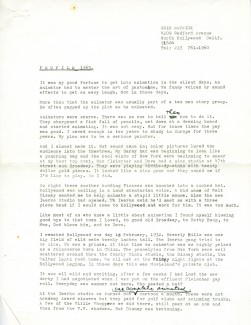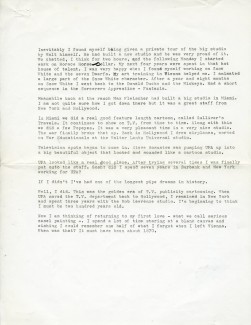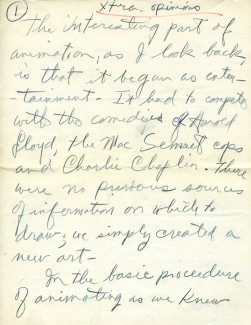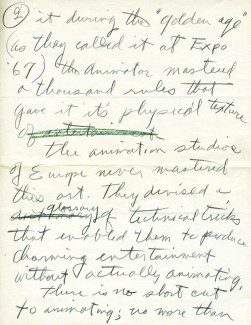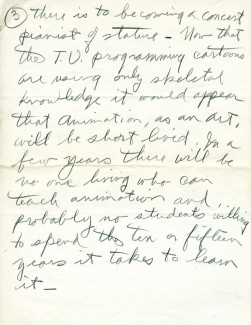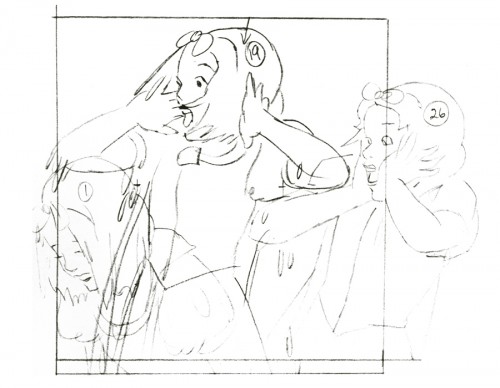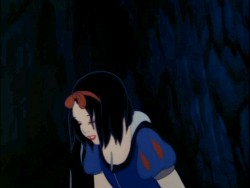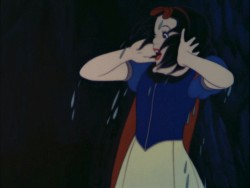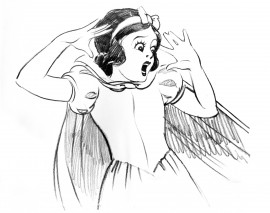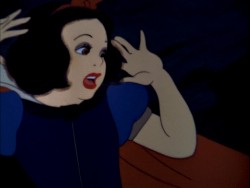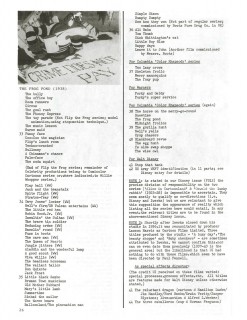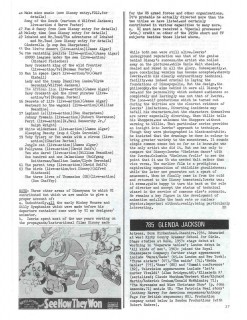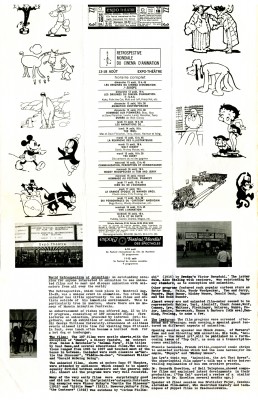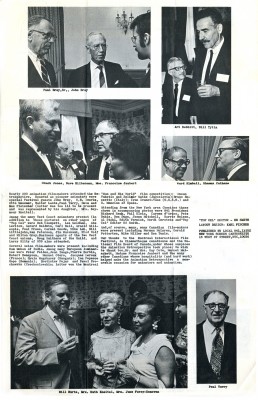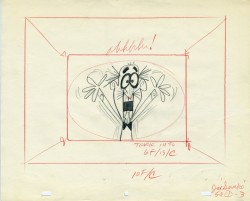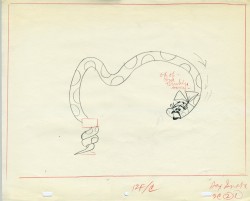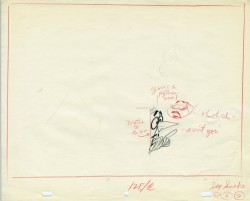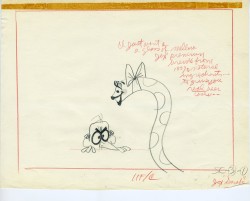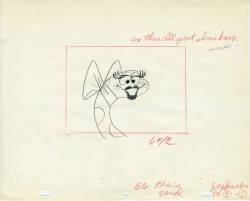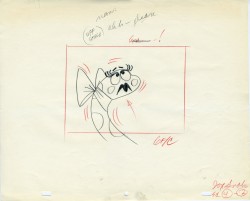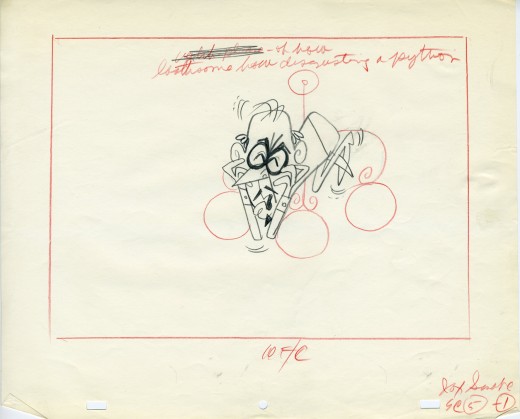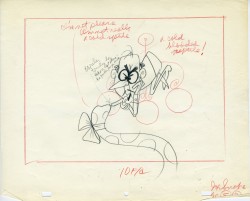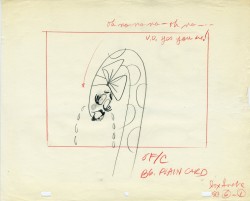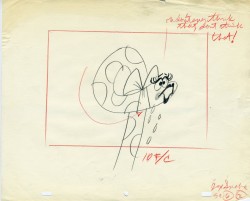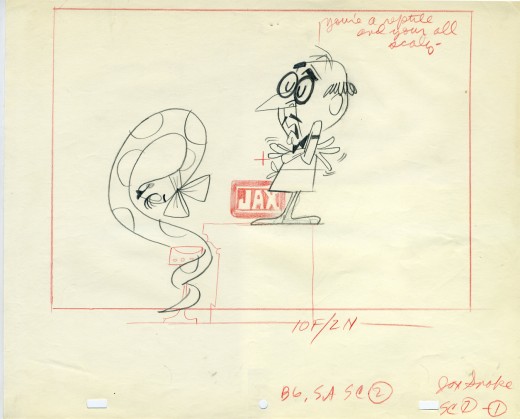Search ResultsFor "Grim Natwick"
Articles on Animation 09 Jul 2007 08:02 am
Grim Cartoonist Profile Article
- Grim Natwick wrote a number of articles for Cartoonist Profiles Magazine. The first of them was written for the fourth issue, November 1969.
This article is pretty much just a bio as written by Grim in a somewhat light style. At the end, he adds some opinions.
I’m posting this short, two page article. And I follow it with the same article as Grim handed it to the magazine. The first two pages were typed (Of course this is pre-computer, so the typing is hunt and peck.) Then he adds the last couple of paragraphs in a hand-written form. This is the most interesting part of the article and the most interesting in the docs posted here. I thought you’d like to see it all, so here it is.
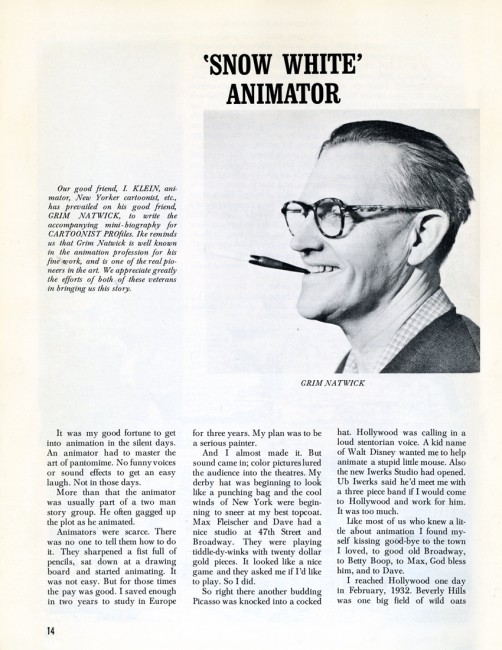 …
… 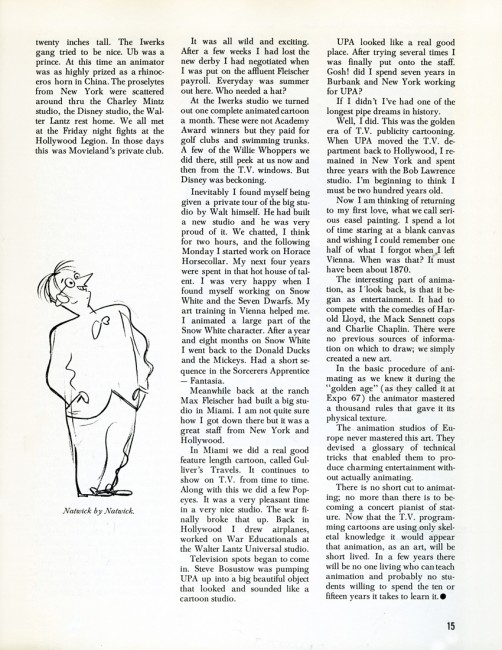
(Click images to enlarge.) The article as published, above. The original manuscript, below.
Comic Art &Commentary &Daily post &Fleischer 03 Jun 2007 08:11 am
Willard Bowsky et al
There are a number of interesting posts I’d like to call to your attention:
- First and foremost, Joe Campana on his site, Who and Where, has a post about Fleischer animator Willard Bowsky who died in battle during World War II.
Bowsky was a big guy at the Fleischer studio, and he’s rarely reaped the praise deserved for his work there. He was one of those at Fleischer’s who moved into the position of animator when there was a virtual exodus for the West Coast by many of Fleischer’s animators. Losing Dick Huemer, Sid Marcus, George Stallings and George Ruffle left only Ted Sears and Grim Natwick as animators. Suddenly Al Eugster, Shamus Culhane, George Cannata, Seymour Kneitel, Bill Henning and Willard Bowsky all received promotions.
Over the years I’d asked quite a few of the Fleischer veterans, who I’d met, for some information about Bowsky, but rarely did I get more than an anecdote about him.
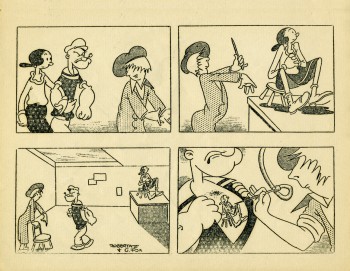 This is the sort of comment I heard. It comes from Shamus Culhane‘s book Talking Animals and Other People. (I’m not one to take Culhane’s usually biased comments verbatim, though undoubtedly there’s some truth in the statement.
This is the sort of comment I heard. It comes from Shamus Culhane‘s book Talking Animals and Other People. (I’m not one to take Culhane’s usually biased comments verbatim, though undoubtedly there’s some truth in the statement.
- Within a very short time some of the neophyte animators began to exhibit real talent as filmmakers. One was Willard Bowsky. He was about twenty-one at the time, a loudmouthed, opinionated fellow, who had a ready answer for every problem, political, artistic, or ethnic. He was probably the only person in the studio who was openly anti-Semitic. It didn’t seem to bother Max or Dave, even when people complained. While they admitted that it was probably true, they had none of the fierce defensiveness about Jewishness that developed later as a result of the rise of the Nazis.
According to the standards of the studio, Willard drew very well and had a great appreciation for contemporary music, so he was given sound tracks like “Minnie the Moodier” and “Stick Out Your Can Here Comes the Garbage Man.” He would even go into ecstasies over Cab Calloway records.
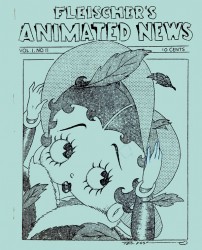 With my background of classical music, I thought Calloway sounded like jibberish and avoided those assignments like a plague. While Bowsky really couldn’t draw well enough to compete with West Coast films, he did make some of the better jazz cartoons in the studio because he loved the music.
With my background of classical music, I thought Calloway sounded like jibberish and avoided those assignments like a plague. While Bowsky really couldn’t draw well enough to compete with West Coast films, he did make some of the better jazz cartoons in the studio because he loved the music.
Willard lived at home with his parents and took no part in the usual Saturday night saturnalias. He was what one might call a pre-McCarthy, gung ho, ail-American Babbitt, an avid reader of the New York Mirror, with social convictions to match. He believed that all the unemployed were just being lazy, and intimated that anybody with ambition could succeed in this country, freely offering himself as a shining example.
Joe Campana really fills in a lot of gaps with his extraordinary post that details a lot of Bowsky’s life and final efforts during the war. Who and Where is becoming one of the better sites out there.
- I’m pleased to see that Will Finn has entered the Blog-writing fray. I love a good, new articulate voice to attend to. Check out his site. I’ve attached his link to my regulars. Thanks to Cartoon Brew for alerting us.
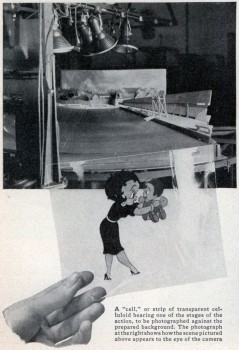 - Here’s an article from a 1936 issue of Popular Science showing how the 3D backgrounds were created for the Fleischer cartoons. The image to the left, obviously, comes from this article.
- Here’s an article from a 1936 issue of Popular Science showing how the 3D backgrounds were created for the Fleischer cartoons. The image to the left, obviously, comes from this article.
- Hans Perk posts on his blog A Film LA a 1936 Disney document about a “Gag File.” There’s always something new to dig up about the Golden Disney years. It’s a very interesting and provocative document.
 Blue Sky reports that the Tinkerbell film is finally shaping up having been wholly reworked by John Lasseter. This means that the trio of “Fairy” films can move forward. A cgi Tink, voiced by Brittany Murphy, will be coming our way. Can’t wait.
Blue Sky reports that the Tinkerbell film is finally shaping up having been wholly reworked by John Lasseter. This means that the trio of “Fairy” films can move forward. A cgi Tink, voiced by Brittany Murphy, will be coming our way. Can’t wait.
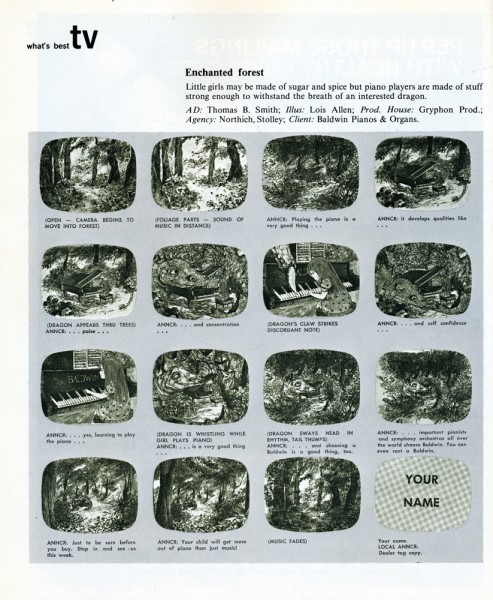 – Finally, I received an email from Howard Beckerman after meeting him at Amid Amidi‘s award ceremony. He said that he’d noticed my post which included the board by Gryphon Productions for Baldwin Pianos. (See the original post here.) Howard’s note reads:
– Finally, I received an email from Howard Beckerman after meeting him at Amid Amidi‘s award ceremony. He said that he’d noticed my post which included the board by Gryphon Productions for Baldwin Pianos. (See the original post here.) Howard’s note reads:
. . . I checked out your informative Splog and noticed Gryphon’s
. . . storyboard for the Baldwin Piano spot. It was directed by
. . . Ed Seeman and animated by Dante Barbetta and…me.
You never know what bit of info is going to turn up. It’s a great world.
Animation &Commentary 27 May 2007 08:21 am
Aaargh!
- I tend to stay away from John Krisfalusi‘s site because I often come away angry. John is one of the most knowledgeable, articulate and intelligent animation writers out there. His “course” in animation, built on the back of the Preston Blair primer, is priceless. I’ve followed that myself knowing full well that I still have a lot to learn about the medium.
However, John likes to taunt the world beyond his little box of fans and followers.
As promoted by Stephen Worth‘s AHAA blog (the link that led me to 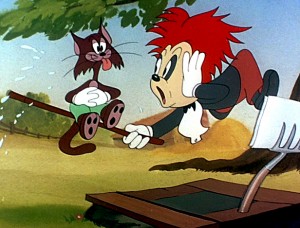 John K), a recent post had John espousing the positive “creative freedom” in 1940′s studios such as Terrytoons and Walter Lantz.
John K), a recent post had John espousing the positive “creative freedom” in 1940′s studios such as Terrytoons and Walter Lantz.
. . . . S p i t. . t a k e !. . (WHAT!!!)
As if that weren’t enough, he then posts UPA’s Unicorn In The Garden and calls it: “depressing downbeat dreary, creatively stifled drizzle.” I repeat, he’s just compared the UPA classic negatively to Terrytoons and Walter Lantz’ cartoons. (A better place, I think, to look for “dreary drizzle”.)(Dick Lundy’s creative freedom!)
. .
In later postings, atop a rough sketch from UPA he writes: “If it’s bland and sterile, it’s design.” Or he says “… and the other UPA guys decided to abandon animation, fun and lush movement and instead focus on ‘design’.” Then he praises Bill Tytla’s insipid animation and direction at Terrytoons in an ugly little short that has its own immature charm – but little else praiseworthy. There’s no lush movement or fun anywhere to be found in that short. There’s only a boxed-in, brillliant artist, Tytla, unable to work at the top of his game.
Of course all this derisive goading prompts his sycophantic fans to comment of Unicorn In The Garden:
“It’s painful to look at.”
“Upa did destroy the cartoon world.”
“… it was just a big “fuck you” to the audience.”
“Even with the better examples, there’s no denying that most of their flat designs are quite ugly. UPA sorta made it okay to do ugly animation.”
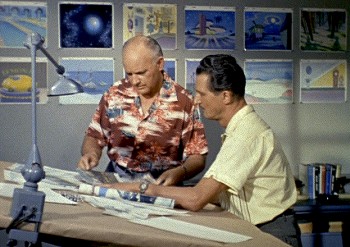 The problem is that John Krisfalusi knows full well how important the UPA break was to animation.
The problem is that John Krisfalusi knows full well how important the UPA break was to animation.
He knows that unless a group of artists broke from the 19th Century style of illustration animation would have remained a world of cute kittens and fairies, princesses and witches. History exists and we have to look at all of the influences to understand why it changed as it did.
(Beware: designers exercising creative freedom at the Lantz studio.).
Without UPA, 101 Dalmatians, Heavy Traffic, and Ward Kimball’s late success wouldn’t have existed. Without UPA, Maurice Noble’s brilliant work for Chuck Jones, Ralph Bakshi’s classic early films or Ren and Stimpy wouldn’t have existed. There had to be a break with the past – design wise – to enable other talents to take it to another level.
Milt Gross‘ style was squeezed at pre-UPA MGM, and good as his shorts were, they don’t equal the insanity of his strips. Today that can be done thanks to UPA.
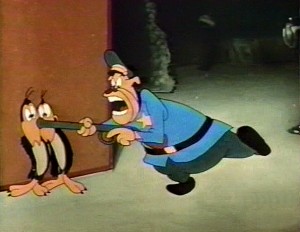 John goes into some detail about the art of Jim Tyer (but doesn’t really say why his work is great.)
John goes into some detail about the art of Jim Tyer (but doesn’t really say why his work is great.)
Mind you I think Jim Tyer was brilliantly well ahead of his time, and I’ve studied his work endlessly.
I also recognize that his animation was a GRAPHIC (read: DESIGN) distortion of his characters to pull out any inner spirit. You feel as though his pencil rushed to get out these drawings. The result is endlessly hilarious, but it also works in a larger, more subconscious way.
(Jim Tyer, free from Paul Terry’s low budgets.). . . . . .
Without the graphic changes brought about by UPA, Tyer’s work would not have been accepted by even the cheap producers at Terry’s or Famous. Tyer was endlessly put down by the animators around him at those studios, but he continued to do what he did.
Johnny Gent told me, “Jim could never hold a character.” Two of Terry’s best known assistants told me that he “couldn’t stay on model.” Thank god Bakshi appreciated Tyer’s work. Baksi also appreciated Hubley’s work. He stole from him in putting together his first feature.
Artists like Jules Engel, Bill Hurtz and Paul Julian; animators like Bobe Cannon, Grim Natwick and Art Babbitt had real creative freedom at UPA, and changed the world of animation for the better.
You don’t have to like The Yellow Submarine to recognize that it was a breakthrough, and you don’t have to like UPA’s films to recognize that it was a breakthrough. You don’t have to attack one of the great animation shorts, Rooty Toot Toot, to make your point. Especially when you’re aware of the brilliant animation and design – yes, design – in that film. It all comes together perfectly.
My gosh! Isn’t it time to have to stop defending Picasso as an artist. Michelangelo was great, but so was Pablo in his own way.
You do have to be honest, John K. You want to make a point, and you go so far over the edge thinking it’ll help your case, but it doesn’t. You’re speaking to new generations of animators, and perhaps they don’t fully understand or appreciate the history as you do. Take smaller steps in your criticism, please. And keep writing but don’t think you have to incite the world to get your point across. It’s just annoying and dishonest.
Commentary 04 May 2007 08:01 am
Brando-style Acting Animated
(Note: I wrote this piece based on Mark Mayerson’s initial comments about acting, and I’m responding to what I read there. He has expounded on those thoughts, and I should react. But I think I’ll let this post sit as it is.)
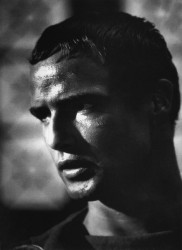 – Mark Mayerson, on his blog, offered enormous and deserved praise for Marlon Brando‘s acting. He then compared it to animation suggesting that no animator has touched the surface of Brando’s work (my phrasing – not Mark’s). This commentary had me mulling about anima-tion and animation acting for the next day or so, and I thought I should comment.
– Mark Mayerson, on his blog, offered enormous and deserved praise for Marlon Brando‘s acting. He then compared it to animation suggesting that no animator has touched the surface of Brando’s work (my phrasing – not Mark’s). This commentary had me mulling about anima-tion and animation acting for the next day or so, and I thought I should comment.
Since I’m prone to ramble, I decided not to overwork Mark’s site with my words and to post it here. Consequently, I think that you might want to read Mark’s not-very-long commentary if you want to continue; go here.
To start with, Mark ends his piece by suggesting that Gollum, the character, is probably the closest that animation has to Brando. This I have to push away from my table with one big stroke.
I don’t understand how a character could be the equivalent of Brando. Even if I thought Gollum were well animated (and I don’t even consider it animation – the way I consider Tytla’s work animation), I would have to compare it to one of Brando’s characters – Stanley, in Streetcar, perhaps.
Perhaps I misunderstand Mark’s thought here.
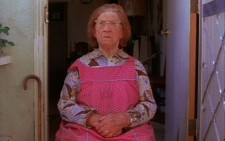 Years ago I was exiting the premiere of Errol Morris‘ first documentary feature, Gates of Heaven. I was shaken, disturbed and said so to my companion. The documentary was an anti-New Wave film. Yet, animation hadn’t even had its own New Wave! (And still hasn’t!) What hope was there for my chosen field?
Years ago I was exiting the premiere of Errol Morris‘ first documentary feature, Gates of Heaven. I was shaken, disturbed and said so to my companion. The documentary was an anti-New Wave film. Yet, animation hadn’t even had its own New Wave! (And still hasn’t!) What hope was there for my chosen field?
Intelligently, my companion reminded me of Yurij Norstein‘s masterpiece, Tale of Tales. I knew she was right; Norstein had pushed animation up to the equal of live action. The future was as much in my hands as documentaries were in Errol Morris‘ hands.
How many times since then have I reminded myself of Tale of Tales?
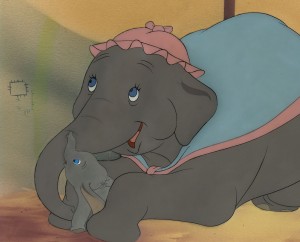 I do think there are animators who were the equivalent of Brando.
I do think there are animators who were the equivalent of Brando.
Tytla was certainly one. I think Tissa David‘s work is on a par with Brando (though I usually think of her closer to Meryl Streep – to me every bit the equal to Brando. (The divine moment in the mediocre film, Devil Wears Prada, where Streep sits in a bathrobe, with bare feet, allowing her vulnerability to escape, before hardening again, has to have been the finest acted moment in film last year.)
The fact that a handful of animators with the knowledge of their craft and the ability to use it didn’t get the work or the part is, to me, irrelevant. If Brando had only played the equivalent of Superman’s father for his entire career, we wouldn’t be talking about him. But he did play that role as well as other mediocre parts, and he played them all extremely well. He also played many masterful roles throughout his career. He gave actors a point in the sky to which they could stretch.
Tytla – there can be no doubt – was in the stratosphere. He is the one we all point to. Stromboli in Pinocchio, Chernobog in Fantasia, Dumbo under his mother’s legs, the dwarfs in Snow White. Can there be any greater acting? The fact that he was forced out of Disney’s studio to the lacking resources of Terrytoons had to affect everything he did. There was no possibility of his continuing the brilliant work. He was subjected to be Superman’s father for the rest of his career.
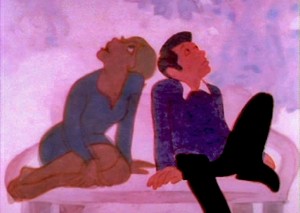 Tissa David is an animator who has made a career of the little human touches among those brilliantly drawn characters of hers. She has worked always on a very tight budget with high footage rates. She has had projects the equivalent of some of those Tytla Disney films, but she was always forced to the ground with their Independent budgets. She has had a couple of large budget projects that had poor stories and/or characters that she had to develop. The fact that she has not always had the great budgets to support her great characters has not hurt her work. She is still a great actress, and her characters – even on three’s – live. Unfortunately, most of her work has been done in the regional theater of animation where the audiences aren’t massive. However, she has made gold of what was handed her, and her talent and abilities are every bit the equal of Brando – and Streep.
Tissa David is an animator who has made a career of the little human touches among those brilliantly drawn characters of hers. She has worked always on a very tight budget with high footage rates. She has had projects the equivalent of some of those Tytla Disney films, but she was always forced to the ground with their Independent budgets. She has had a couple of large budget projects that had poor stories and/or characters that she had to develop. The fact that she has not always had the great budgets to support her great characters has not hurt her work. She is still a great actress, and her characters – even on three’s – live. Unfortunately, most of her work has been done in the regional theater of animation where the audiences aren’t massive. However, she has made gold of what was handed her, and her talent and abilities are every bit the equal of Brando – and Streep.
And there is Tale of Tales. Norstein has done it many times from that truly adult film, to Hedgehog in the Fog or The Heron and The Crane. The direction is brilliant, the filmmaking superb, and the acting equal to the greatest. The unfortunate part is that he has done so little work since the fall of the USSR. (Check out the beautiful and recent Winter Days.)
Brando’s acting style came out of the Actors’ Studio which was an outgrowth of the Group Theater which grew out of Stanislavsky. I always like to think back on a comment John Hubley told me. He said that a small number of those at the Disney were ardent advocates of Stanislavsky, but the rest of the studio couldn’t spell it. Tytla was definitely one of the advocates; just take a look at Chernobog and try to argue otherwise. Tissa came out of France at just the time that the French New Wave started to spark. She went to work under the wing of Grim Natwick who was also one of the Stanislavsky devotees.
Mark is right that there are very few people who could be tagged with such greatness. Most of those I can think of are dead or are no longer working.
These days acting techniques and stylization has grown so enormously sophisticated. Animation abilities have gone in the opposite direction. Today, in animation, it’s all about the broad gesture. I don’t think there is anyone among the young stretching – or trying to stretch – to the same heights, and I’m not sure there will be any more. Though I can hope
- By the way, you should already know that Mark Mayerson has been posting enormously  valuable information with his breakdowns and analysis of Pinocchio, scene for scene.
valuable information with his breakdowns and analysis of Pinocchio, scene for scene.
It would be wonderful if somehow Mark got this bound in a published volume. He’s just posted the seventh part of his notes on the “Mosaics” he’s been doing of this monumental film. If you have any interest in animation, you should be following these posts.
Commentary &Daily post 29 Jan 2007 07:46 am
BAFTA’s & Rotocapture
The nominees for the BAFTA Awards were announced last week. This is the British equivalent of the Academy Awards. Generally, a great winner emerges in the animated categories, particularly the shorts. This year is no exception:
Two of the nominees for Best Animated Feature match the Oscars: Cars, Happy Feet.. Flushed Away replaces Monster House on their list – appropriately, since it’s animated.
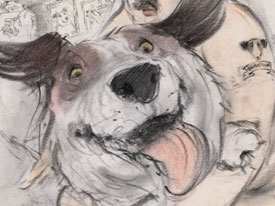 Nominees for Best Animated Short film are:
Nominees for Best Animated Short film are:
DREAMS AND DESIRES – FAMILY TIES – Les Mills/Joanna Quinn
GUY 101 – Ian Gouldstone
PETER AND THE WOLF – Hugh Welchman/Alan Dewhurst/Suzie Templeton
Peter and the Wolf by Suzie Templeton is a one hour animated film to the Prokofiev score. Click here to see a trailer.
Guy 101 by Ian Gouldstone is a short film about a man who hears a story about a hitchhiker from the other side of the Internet. The film was done as a student film for the Royal College of Art Animation. See it here.
Dreams and Desires: Family Ties by Joanna Quinn is a film about a woman and her home movies of a wedding. Brilliantly conceived and ridiculously skipped over by the US Oscar voters. It’s certainly the best animated short of the last year. The film is part of Don Hertzfelt & Mike Judge’s Animation Show which played in NY laste week.
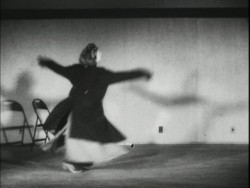 – A lot has been discussed in the past week about the validity of Motion Capture as a form of “Animation.” This conversation was instigated by the Oscar nominations. Two of the three nominations for the Best Animated Feature were created using MoCap.
– A lot has been discussed in the past week about the validity of Motion Capture as a form of “Animation.” This conversation was instigated by the Oscar nominations. Two of the three nominations for the Best Animated Feature were created using MoCap.
Mark Mayerson questioned if we shouldn’t be deciding whether we’re officially going to call Motion Capture animation. And if we shouldn’t, then is Cars the only officially nominated animated feature?
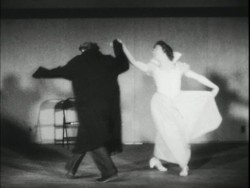 Now, of course, Motion Capture animators feel slighted. But they would have to agree that the soul, the impetus behind the movement does not come from them, but rather from the live action actor that was originally “captured”?
Now, of course, Motion Capture animators feel slighted. But they would have to agree that the soul, the impetus behind the movement does not come from them, but rather from the live action actor that was originally “captured”?
The comparison has been made that
traditional animation has often used Roto- scoping in creating animation. In fact, Disney’s Cinderella became the first feature that was wholly filmed in live action prior to 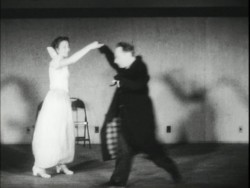
animation.
However, I’d like to make the point that the two methods are unrelated except in that live actors are involved. The difference to me, is that one is inspiration and the other is the heart of the animation.
When an animator is given live action reference material – the rotoscoped/traced drawings from the live action acting – he/she refers to it but animates to what is necessary for the scene. the animator is the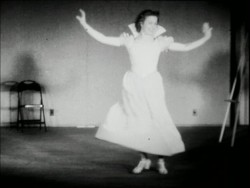 actor using the prerecorded voice, the physical rotoscoped reference, and anything available to help give the character a “soul.”
actor using the prerecorded voice, the physical rotoscoped reference, and anything available to help give the character a “soul.”
Even in Bakshi’s use of Rotoscoping in Lord of the Rings, the animators were allowed to push the drawings beyond the live action, alter the drawings to get them on character, and essentially produce the action.
When an “animator” gets the MoCap filmed live action, the actions are set. The actors have done the movement. What remains is 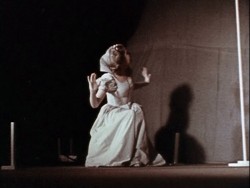 the proper positioning of the characters within the created scene, cleaning up the characters and constructing the scene. There’s no real animation, as we’ve come to know it.
the proper positioning of the characters within the created scene, cleaning up the characters and constructing the scene. There’s no real animation, as we’ve come to know it.
For years now, I’ve called this electronic puppetry, but that’s not really accurate. The site Digital Puppetry seems to have labelled it correctly.
Younger animators seem to have less a problem with all of this labelling and irritation accrued by older veterans. In fact, the 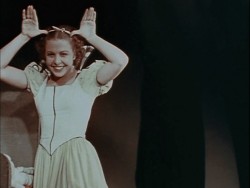 problem really is a threat to the “animator.” Last week, I hyperbolically suggested that the days of the animator were a dead as the dodo. You see, animation has turned into a computer effect. Live Action directors are now directing “animated films” in greater numbers. Peter Jackson had his “Gollum,” Robert Zemeckis had his “Polar Express” (and produced “Monster House”), Ang Lee had (and in fact acted) The Hulk. The “animators” have become interchangeable and almost irrelevant.
problem really is a threat to the “animator.” Last week, I hyperbolically suggested that the days of the animator were a dead as the dodo. You see, animation has turned into a computer effect. Live Action directors are now directing “animated films” in greater numbers. Peter Jackson had his “Gollum,” Robert Zemeckis had his “Polar Express” (and produced “Monster House”), Ang Lee had (and in fact acted) The Hulk. The “animators” have become interchangeable and almost irrelevant.
You aren’t able to define anyone’s animation style behind any of Tom Hanks’ characters in Polar Express. You can only see Tom Hanks or Savion Glover in Happy Feet.
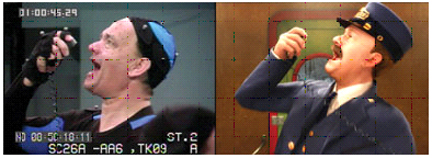
(All images except this one enlarge by clicking them.)
In Snow White, you can tell which scenes Grim Natwick animated; his style of animation comes across. It doesn’t matter how many rotoscoped drawings were given to him as reference. Grim animated the scenes.
In the big picture what really does all this quibbling matter? I enjoyed Happy Feet more than I did Cars. Cars was a better constructed film, both were riddled with cliches. I was entertained by all that dance. I like Savion Glover (though I would have preferred watching Savion Glover.) The film also seemed to have some sort of misguided representation of a message. I appreciated that. Cars, to me, had only a lot of loud noisy reverberation. From the first frame, the film came screaming. The artistry behind the imagery was astounding, as expected from Lasseter, but the film was boring.
Of course, this is only my opinion based on my biases. You have your opinions based on your biases. However, as an Academy voter, I’ll probably vote for Cars because I think technically it was a better “Animated” film. Isn’t that the category?
If you haven’t read Mark Mayerson or Keith Lango on this subject, you should.
Ward Jenkins reminded me that he had two interesting posts about Polar Express on his site. It gives an interesting look at how to correct the “Zombie Eyes” on the characters. #1 and #2. Check them out, if you haven’t seen them.
Daily post 17 Jan 2007 07:54 am
Drawing Lines
Floyd Norman continues his Toy Story story on Jim Hill Media. Part one was here.
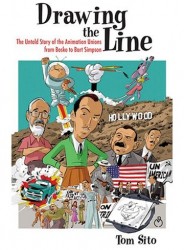
- On the FPS site Mark Mayerson has an excellent review of Tom Sito‘s book, Drawing the Line.
I think this is something of an important book in that it covers material which is just not the focus of most histories. As Mark rightly says, “… histories have concentrated on studios, cartoon characters and individual artists.” The book rightly points to the important contribution unions have made to animation’s history. The information on the McCarthy hearings and the animation studios was worth the book on its own.
The review (and the book) are worth a read. Here.
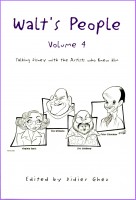 Another book just published is Didier Ghez‘ fourth volume of his series, Walt’s People. This series has collected interviews with many of the masters of animation. The interviews are usually important and inciteful reading. I’d certainly encourage any of you to buy the series. They can be found on Xlibris or Amazon.
Another book just published is Didier Ghez‘ fourth volume of his series, Walt’s People. This series has collected interviews with many of the masters of animation. The interviews are usually important and inciteful reading. I’d certainly encourage any of you to buy the series. They can be found on Xlibris or Amazon.
Walt’s People Volume 4, just about to hit the stalls, includes interviews with Grim Natwick, Dick Huemer, Joe Grant, Peter Ellenshaw, John Hench, Marc Davis, Roy Williams, Floyd Norman and many more. It looks to be as great an edition as all of the ohter three.
For more information, and to see a great site, go to Didier’s Disney History.
– If you want to have a little fun go to Pictaps, click on paint and draw a character. Then you can watch it start moving in a herky-jerky dance. It’s an entertaining site constructed by Masayuki Kido in Japan.
The example to the left was one I did in a couple of minutes.
If you have the time, it’s a kick.
I found this link on Drawn which is a fine site that should be a regular stop for anyone who draws or is interested in illustration. They feature articles and links to illustrators and artists.
It came to Drawn via Dave Roman.
Animation Artifacts 22 Dec 2006 10:22 am
Iwerks – Film Fan Dope
- I make no bones about the fact that I have been a fan of Ub Iwerks‘ work as long as I’ve been a fan of animation.
The first 8mm short that I owned (at age 12) was a Castle Film version of Iwerks’ Jack and the Beanstalk. I studied that film frame by frame by frame, over and over again. Of course, it was directed by Grim Natwick with whom I discussed the film in the 70′s.

When I saw this issue of a 1968 Film Fan Monthly available, I had to buy it for the Mark Kausler article about Iwerks. (I have this desperate need to own things I love.) So, with apologies to Mr. Kausler, I’m posting the short, three page article. Since the magazine is long out of print – I felt it something worth sharing.
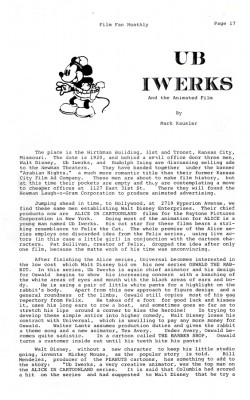
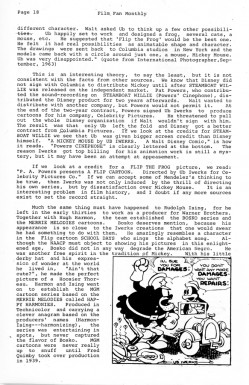
(Click any image to enlarge to a readable size.)
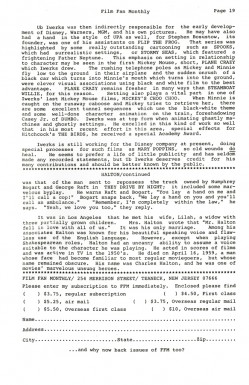
- I no sooner posted this article than I thought that perhaps I would put up the Film Dope piece on Iwerks as well. This Briish publication, as I mentioned before on this site, was a favorite of mine. I’ve tried to collect as many issues as I could locate. I’ve posted this once before in June, but it doesn’t hurt to connect the two articles.
The four page entry for Ub Iwerks follows:
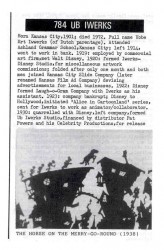
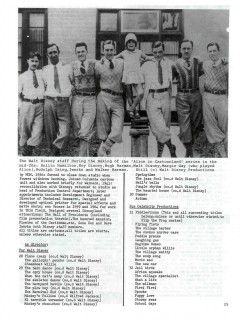
Animation Artifacts &Daily post &Fleischer 01 Dec 2006 09:16 am
Mr. Bug Comes To Town for the Holidays
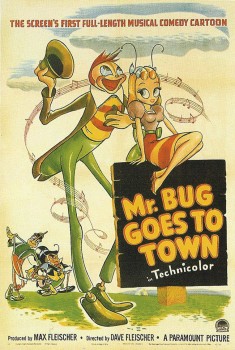 – Wednesday, I went to the Museum of Modern Art to see a screening of a new print of Mr. Bug Goes To Town. I didn’t quite expect a private screening; there were only four of us in the audience which seats a couple hundred.
– Wednesday, I went to the Museum of Modern Art to see a screening of a new print of Mr. Bug Goes To Town. I didn’t quite expect a private screening; there were only four of us in the audience which seats a couple hundred.
Over the holidays, from December 19 through January 2, MOMA is screening 10 family films. These include: Elf , Shrek, Babe, Meet Me in St. Louis, and The Adventures of Robin Hood, among others.
I first saw Mr. Bug when I was about 12.
It was shown at a local theater, and I couldn’t believe I hadn’t known about it. I had borrowed – in fact memorized – so many library books on animation, yet none of them had talked about it. (That was back in, roughly, 1958.)
The film was, to me, new and a gem.
This MOMA screening is the second time I was able to see the feature on a big screen, though I’ve seen it dozens of times on tv. (I own the dvd and a print and can watch it in 16mm, but that’s not quite the same thing.)
The film was a total flop when it was released in 1941. Pearl Harbor took place three days before its premiere, and the oncoming World War limited the distribution of most films. The European market was completely lost, and that represented 1/2 of the potential income. 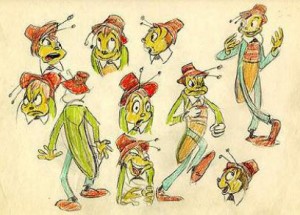
Paramount, under the leadership of Barney Balaban, took the opportunity to break up the Fleischer studio (they had obviously planned to do so in advance of the film’s limited release) and renamed it Famous Studios under the direction of Max Fleischer‘s son-in-law, Seymour Kneitel.
I’ve always loved aspects of the Fleischer studio animation. It’s so rooted in New York (despite the fact that the later stuff was done in Florida) that it absolutely screams out with an original charm of its own that completely separates it from Hollywood’s films.
The Fleischers obviously learned a thing or two from Disney, they stole a number of his animators (such as Grim Natwick, Al Eugster and Shamus Culhane) for Gulliver’s Travels and they brought Leigh Harline (who’d won the Oscar for Pinocchio) in to compose the film’s score and Pinto Colvig (the voice of “Goofy” did voices for both Fleischer features.)
Seeing the film again on a big screen accentuated the background styling of Robert Little. Given the closeup nature of the film, following small bugs about, the Backgrounds consistently fake a low depth of field look, as if it were a live action film. The backgrounds, with very few exceptions, are painted with at least 1/3 – usually more like 2/3 – painted out of focus. At first, I thought they were using some type of multiplane device to put areas of the bg’s out of focus. No, on the big screen you could see the texture of the paper or random specks of paint – clearly in focus. The effect is to highlight the characters and give a focal point for the audience. Brilliantly done.
Also there’s one beautiful point where they fade out the scene – to about 90% black – while keeping a small iris around the little bug at the piano. This before they fade out the entire scene. It’s an effect Martin Scorsese uses in The Departed, but Mr. Bug was done 70 years ago. They’re beautifully exploiting a silent film technique for dramatic purposes. 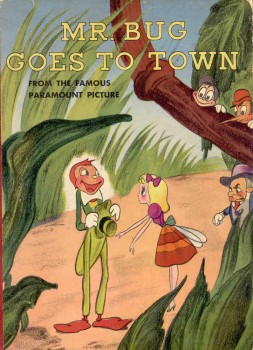 It’s an important film, and those who can make it in January should go.
It’s an important film, and those who can make it in January should go.
I posted some material from Mr. Bug Goes To Town back in February (a children’s book and sheet music).
Go here to relive that posting.
But back to MOMA. The film’s a beauty, and the print is good (some scratches but a beautiful IB Technicolor print.) The screening for the public will be on Jan 1 at 11:00 & 2:00. It’s a great way to start the New Year.
Mr. Bug Goes to Town (1942) Directed by Dave Fleischer. Screenplay by Dan Gordon, Tedd Pierce, Isidore Sparber, William Turner, Carl Meyer, Graham Place, Bob Wickersham and Cal Howard.
(Click on any image to enlarge.)
MOMA‘s complete holiday family film schedule is as follows:
- Elf Tuesday, Dec 19 Noon & 3:00
Big Saturday, December 23 and Sunday, Dec 24 Noon
The Adventures of Robin Hood Tuesday, Dec 26 11:00 & 1:30
Shrek Wednesday, Dec 27 11:00 & 1:30
Wallace and Gromit: The Curse of the Were-Rabbit Thursday, Dec 28 11:00 & 1:30
Babe Friday, Dec 29 Noon & 2:00
Madagascar Saturday, Dec 30 11:00 & 1:30
Ghostbusters Sunday, Dec 31 11:00 & 1:30
Mr. Bug Goes to Town Monday, Jan 1 11:00 & 2:00
Meet Me in St. Louis Tuesday, Jan 2 11:00 & 2:00
Animation Artifacts &Events &Festivals &repeated posts 28 Nov 2006 07:43 am
Montreal Expo 1967 – recap
- Today I’m posting a special issue of Top Cel, the NY animation guild’s newspaper. Dated August 1967, it celebrates the Montreal Expo animation conference and exhibition held that summer. Obviously, this was the place to be that year if you were an animation lover.
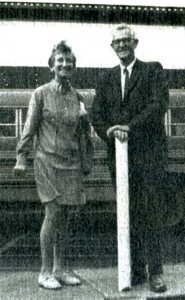 Just take a look at that list of signatures of attendees. Some of them are:
Just take a look at that list of signatures of attendees. Some of them are:
Chuck Jones, Peter Foldes, Manuel Otero, Edith Vernick, Abe Levitow, Don Bajus, Bill & Fini Littlejohn, John Halas, Ward Kimball, Ken Peterson, Shamus Culhane, Carl Bell, Pete Burness, Ub Iwerks, Gerald Baldwin, I. Klein, Gene Plotnick, Ian Popesco-Gopo, Carmen d’Avino, Bill Mathews, Len Lye, June Foray, Bill Hurtz, Spence Peel, Paul Frees, Steve Bosustow, Dave Hilberman, Stan Van der Beek, Les Goldman, Jimmy Murakami, Mike Lah, Robert Breer, Tom Roth, Art Babbitt, Feodor Khitruk, Fred Wolf, Ivan Ivanov-Vano, Paul Terry, J.R. Bray, Walter Lantz, Otto Messmer, Dave Fleischer, Ruth Kneitel, Bruno Bozzetto, Bob Clampett, Karel Zeman, Dusn Vukotic, Bretislav Pojar, Jean Image, Grim Natwick, Tissa David, Barrie Nelson, Andre Martin, Ed Smith, Dick Rauh, and John Whitney.
I guess they don’t make Festivals like they used to. There doesn’t seem to be much written about this event, and I wish some of those in attendance would write about it.
From the Wikepedia entry for Bill Tytla, there’s the John Culhane quote: On August 13, 1967, the opening night of the Montreal Expo’s World Exhibition of Animation Cinema, featured a screening of Dumbo as part of an Hommage Aux Pionniers. Tytla was invited, but worried if anyone would remember him. When the film finished, they announced the presence of “The Great Animator.” When the spotlight finally found him, the audience erupted in “a huge outpouring of love. It may have been one of the great moments of his life,” recalled John Culhane. I’m sure there were many such moments.
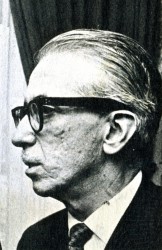 Just to make it all personal, let me tell you a story, although this has nothing to do with Montreal’s Exhibit.
Just to make it all personal, let me tell you a story, although this has nothing to do with Montreal’s Exhibit.
Pepe Ruiz was the u-nion’s business manager. In 1966 – the year prior to this expo – I was a junior in college, determined to break into the animation industry. Of course, I knew the military was coming as soon as I graduated, but I called the u-nion to have a meeting with Pepe. I wanted to see what the likelihood of a “part time job” would be in animation. This took a lot of courage on my part to see what the u-nion was about. I pretty well knew part time jobs didn’t exist. There was no such thing as interns back then.
Pepe was an odd guy who kept calling me “sweetheart” and “darling” and he told me that it was unlikely that I could get something part time in an animation studio.
However he did send me to Terrytoons to check it out.
I met with the production manager, at the time, Nick Alberti. It was obvious I was holding up Mr. Alberti’s exit for a game of golf, but he was kind and said that part time work wasn’t something they did. (He moved on to Technicolor film lab as an expediter after Terry‘s closed. I had contact with him frequently for years later, though I never brought up our meeting and doubt he would have remembered it.) Ultimately, I was pleased to have been inside Terrytoons‘ studio before it shut down shortly thereafter. A little adventure that let me feel as though I was getting closer to the world of animation.
The photos of the Expo are worth a good look. I’ve singled out those above to place around my text. The picture of Tissa and Grim is a nice one of the two of them together.
Ed Smith was the Top Cel editor at the time, and he put together a creative publication.
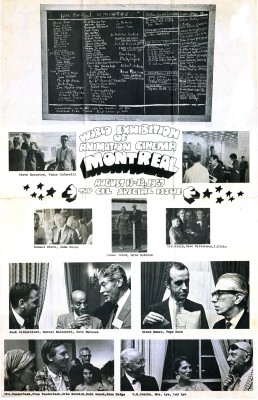 1
1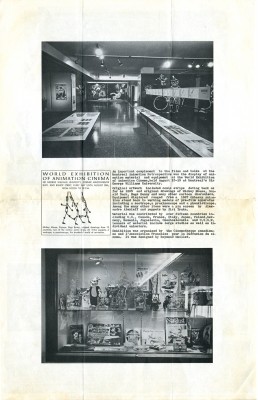 2
2
(Click on any image to enlarge.)
Animation &Animation Artifacts 08 Nov 2006 09:14 am
Jax “Snake” LO’s
 - Continuing with yesterday’s posted Jax Beer commercial, as promised, I am putting up some of the film’s layouts. This represents about 2/3 of them.
- Continuing with yesterday’s posted Jax Beer commercial, as promised, I am putting up some of the film’s layouts. This represents about 2/3 of them.
The art was done by Mordi (Mordicai) Gerstein, who also directed the spot. Grim Natwick animated the spot and Tissa David assisted him. Of course, this was in the days before auido tapes could be handed out, so the animator would get a phonograph of the soundtrack. They could mark it with a white pencil to indicate key spots.
I thought that this in conjunction with yesterday’s prep material gave a good indication of the preproduction that went into making a commercial back in 1962.
That said, here are the layouts:
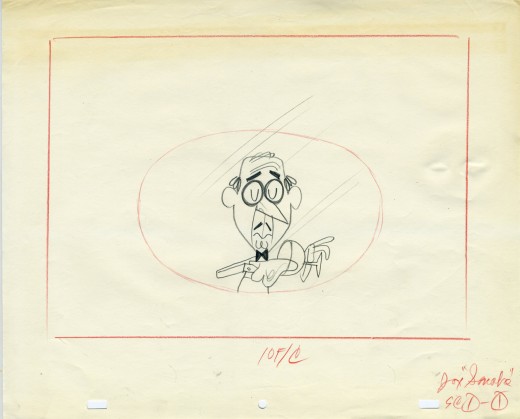
(Click on any image to enlarge.)
